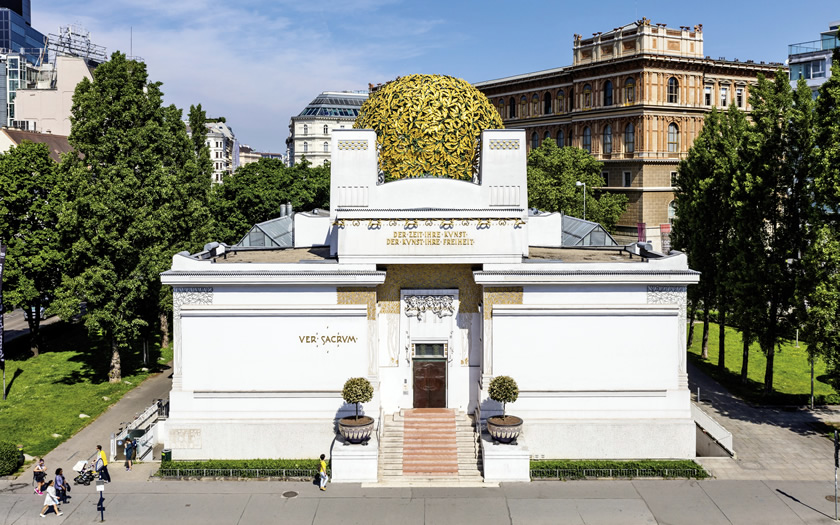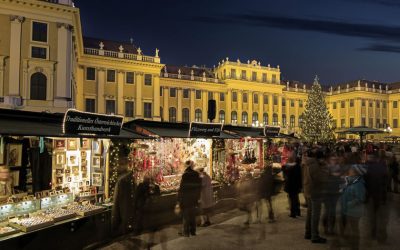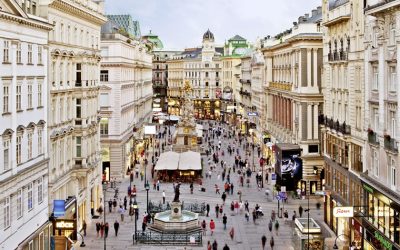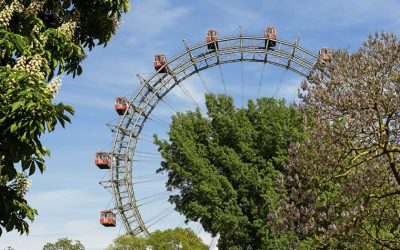Jewels of city architecture
The Viennese call the shining golden sphere made of leaves at the top of the Secession “Krauthappel” (cabbage head). The exhibition house, built in 1898 by Joseph Maria Olbrich, is one of the most important Art Nouveau buildings in Vienna.
Another important representative of the period was the architect Josef Hoffmann. Near the Secession, for example, stands his famous Majolica House. Hoffmann also planned the stations, railings and bridges of today’s underground line 6 as well as the Kirche am Steinhof.
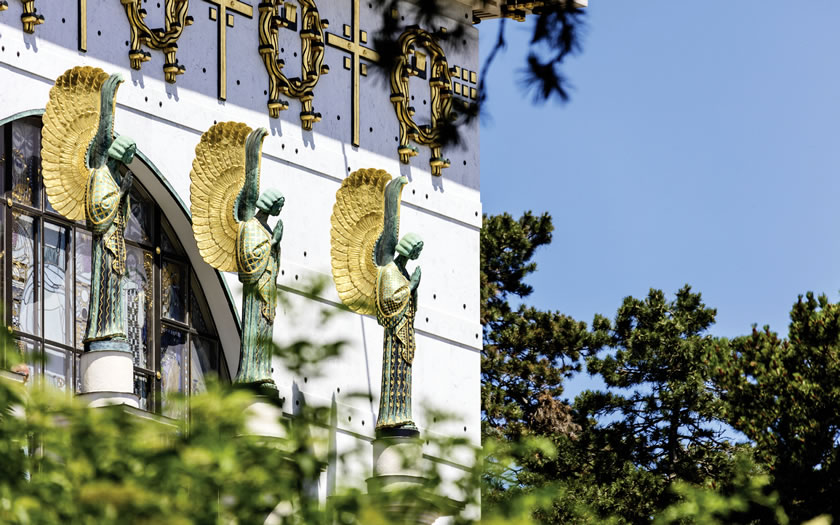
© Wien Tourismus | Christian Stemper
The transition from Art Nouveau to Modernism was shaped by Adolf Loos. Among other things, he planned the Looshaus in the centre of Vienna, which opened in 1912. In the 1920s and 1930s, Vienna attracted attention above all with progressive residential buildings such as the Karl-Marx-Hof.
Exciting architectural sites in the more modern era are, for example, the campus of the Vienna University of Economics and Business Administration, the district around the new main railway station, the Seestadt Aspern on the outskirts of Vienna and the Donau-City (DC), where skyscrapers rise into the sky.
More information: www.wien.info

